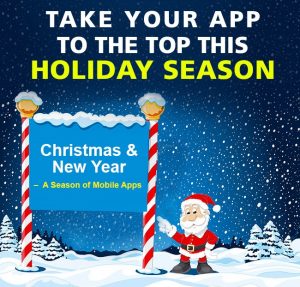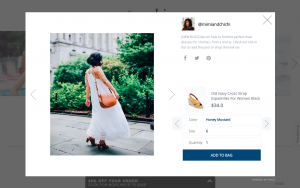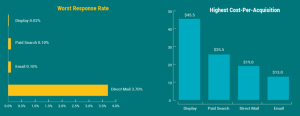Despite the surge in digital and social channels, email marketing is still one of the most effective marketing channels we have at our disposal, with marketers confirming email marketing produces 60% ROI.
A key advantage for this channel, apart from speaking directly to your audience, is the ability to track interactions and engagement and then use this this data to improve the impact of your campaigns.
In search for the Holy Grail of email marketing some marketers lose sight of the importance of the copy and content, looking only at the stats. Content is still king and copy should entice action and emotion.
I work for a B2B marketing agency and we run many email marketing campaigns throughout the year, which typically generate a substantial return of investment and high conversions rates of between 10 & 20%.
We craft marketing emails for ourselves and on behalf of our clients including; awareness and lead generation campaigns, newsletters and event invites. It is important to make sure every word is well thought-out and relevant to the reader, no matter how many emails you have to write.
With this in mind I wanted to share with you the dos and the don’ts of email marketing, how we see them and how effective email copy can make a difference to your email marketing campaigns.
Write for ‘Scannability’
Your readers don’t have time to read every word of your email. It is important to make your email easy to scan. Make the important information stand out!
- Use bullets – these help to break up the copy, but use them wisely. For example; we create email campaigns which are targeted and personalised to senior executives. Here we refrain from using too many bullet points as it can come across as ‘salesly.’
- Emphasise key points by bolding certain text
- Use one idea per paragraph. If you don’t, your messages can get muddled
Create a natural flow which ultimately leads to the CTA
There should be a natural flow that connects the email together. From the subject line to the headline through to the CTA must all be linked to convey your message or tell a story of some kind.
Excite, engage and entertain
When writing an email you assume that the reader will be excited to be receiving this message. They are not. Your writing needs to entice the reader to complete an action and needs to written with conviction and enthusiasm. If you can’t be bothered to write it then they won’t be bothered to read it. Think about emotive words and use a thesaurus to stop yourself from repeating words like ‘amazing.’
The copy needs to effectively communicate to the recipient how this product/offer/service will enrich their lives, no matter if you are writing about the next Apple product or the importance of technology when managing data.
Tone of voice can get a foot in the door
When writing copy to target CIOs the tone of voice will be different to when writing to One Direction fans. Remember to use a tone of voice that fits your brand values and conveys the message correctly to your intended audience. If you are unsure, ask a colleague or friend to read it and feedback to you what they thought, if they use too many negative words then you’ll probably need to re-write.
We have found that saying similar sentences in subtly different ways can increase response rates. You will have no doubt received an email that starts off like the first option below, but the second option sounds more positive allowing the reader to relax:
Dear Craig,
I wanted to discuss with you how we could help your business increase its ROI by 100%
VS
Dear Craig
I would welcome the opportunity to share with you how we could potentially help [CompanyName] to increase ROI by over 100%.
Prove it or lose it
If your email has successfully completed its purpose your reader will be drawn to the CTA. If he/she is still skeptical in any way they will need to see more proof or some evidence of the benefits you are promoting.
In order to build credibility you can:
- Use buzzwords and language they understand
- Spell out the benefits with links to features
- Back up your statement with facts, figures, case studies or customer reviews
- Use video to convey your message
The power of personalisation
By now I’m assuming that most marketers are using personalisation, but how much and how often? Aside from standard personalisation, the trick is create dynamic content which is inserted to offer a completely personalised experience while finding the balance of not using too much that it scares the socks off your reader.
Econsultancy wrote ’10 Things to avoid using in your email subject lines,’ they state that you should not personalise your subject lines, but we’ve found that personalisation of company name, when writing for B2B, leads to 4% more opens, while using their first name doesn’t have any drastic effects on the statistics at all.
Email marketing is constantly evolving and we as marketers face an uphill battle in the fight for our readers’ opens and clicks. Testing will help you to slowly improve your engagement rates, but never rest on your laurels as what works now might not work in 6 months’ time.
In closing I wish to share the most invaluable tip I was ever offered as a writer. When editing your work start by deleting all of your favourite lines within your copy. Take away the fluff, get to the point and your reader will thank you for it
Read more on Fourth Source
(468)
Report Post





